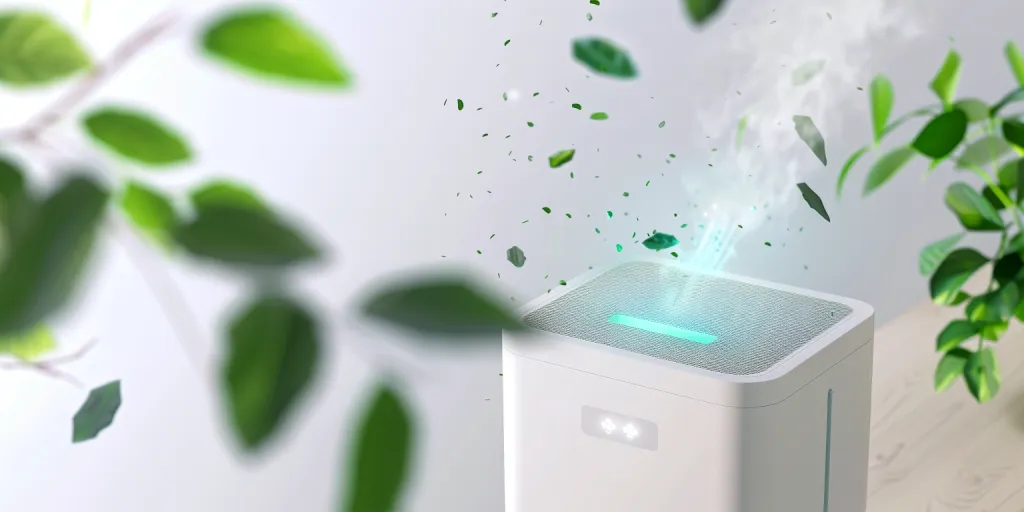In our quest for a healthier living environment, air purifiers have emerged as a beacon of hope, especially in urban areas where air quality often falls below recommended standards. This article aims to demystify air purifiers, shedding light on their importance, how they operate, the different types available, maintenance practices, and the latest advancements in air purification technology. By exploring these facets, readers can make informed decisions about enhancing the air quality in their homes or workplaces.
Table of Contents:
– Importance of air purifiers
– How do air purifiers work?
– Types of air purifiers
– Maintaining your air purifier
– Latest advancements in air purification technology
Importance of air purifiers

Air purifiers have become indispensable in the modern world, where indoor air quality can be up to five times more polluted than outdoor air. They play a crucial role in removing harmful particles, allergens, and pollutants, providing a healthier living environment. For individuals suffering from allergies, asthma, or other respiratory conditions, air purifiers can significantly improve their quality of life by filtering out triggers. Moreover, in the wake of global health concerns, the importance of clean air has been further highlighted, underscoring the need for effective air purification solutions in our homes and workplaces.
How do air purifiers work?

Understanding the mechanics behind air purifiers is essential for appreciating their value. At their core, air purifiers use filters to trap particles as air circulates through them. The High-Efficiency Particulate Air (HEPA) filter is a common component, capable of capturing 99.97% of particles as small as 0.3 microns. Activated carbon filters complement HEPA filters by adsorbing gases and odors, offering a comprehensive air purification solution. Additionally, some air purifiers incorporate UV light to kill microorganisms, providing an extra layer of protection against airborne pathogens.
Types of air purifiers

Navigating the various types of air purifiers can be daunting. The most common types include HEPA air purifiers, which are renowned for their efficiency in trapping particulate matter. Ionic air purifiers, on the other hand, release ions to attract pollutants, which are then collected on a plate. While effective, they can produce ozone, a potential irritant. UV air purifiers use ultraviolet light to neutralize airborne pathogens but are often used in conjunction with other purification methods to ensure comprehensive air quality improvement.
Maintaining your air purifier

To ensure your air purifier operates at peak efficiency, regular maintenance is crucial. This typically involves replacing or cleaning filters according to the manufacturer’s guidelines. For HEPA filters, replacement every 6 to 12 months is recommended, while activated carbon filters may require more frequent changes. Keeping the exterior of the air purifier clean and ensuring it’s placed in a suitable location, away from obstructions, also contributes to optimal performance. Regular maintenance not only prolongs the life of your air purifier but also ensures it effectively cleans the air you breathe.
Latest advancements in air purification technology

The air purification industry is continuously evolving, with recent advancements aimed at increasing efficiency and user convenience. Smart air purifiers, which can be controlled via smartphone apps, allow users to monitor air quality in real-time and adjust settings accordingly. Developments in filter technology promise longer lifespans and higher efficiency, reducing maintenance and replacement costs. Additionally, research into novel purification methods, such as photocatalytic oxidation, offers exciting prospects for even more effective air purification solutions in the future.
Conclusion
Air purifiers play a pivotal role in enhancing indoor air quality, offering a myriad of health benefits. By understanding how they work, the different types available, and how to maintain them, individuals can significantly improve their living or working environments. Keeping abreast of the latest advancements in air purification technology also enables users to leverage innovative features for cleaner, healthier air. As we continue to face environmental and health challenges, air purifiers stand out as essential tools in our pursuit of a better quality of life.





 বাংলা
বাংলা Nederlands
Nederlands English
English Français
Français Deutsch
Deutsch हिन्दी
हिन्दी Bahasa Indonesia
Bahasa Indonesia Italiano
Italiano 日本語
日本語 한국어
한국어 Bahasa Melayu
Bahasa Melayu മലയാളം
മലയാളം پښتو
پښتو فارسی
فارسی Polski
Polski Português
Português Русский
Русский Español
Español Kiswahili
Kiswahili ไทย
ไทย Türkçe
Türkçe اردو
اردو Tiếng Việt
Tiếng Việt isiXhosa
isiXhosa Zulu
Zulu